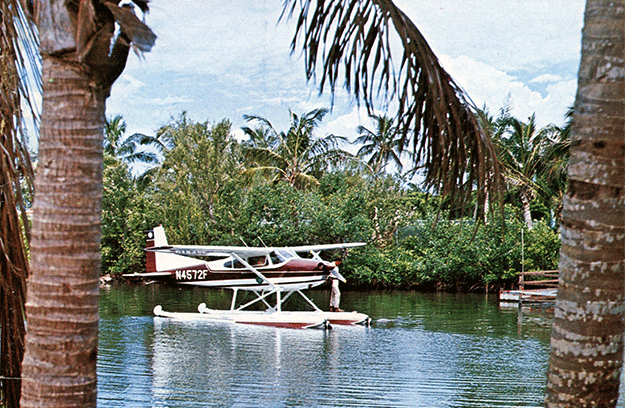Date: February 1971
By: Editorial
Magazine: Flight Magazine
Page: 2
This edition of FLIGHT Magazine is concerned largely with the subject of humanitarian uses of airplanes throughout remote areas of the world, with emphasis on those being operated under the auspices of an interfaith, tax-exempt, completely aviation oriented, U. S. based charity known as Wings of Hope, Inc.
FLIGHT Magazine’s first involvement with the basic concept of desperately needed air transport support of medical missions abroad was in 1964, when we joined a campaign to provide an all-metal lightplane to a small band of Irish medical missionaries based in an inaccessible area of the Turkana desert in Kenya, East Africa. The campaign was a success. World-famous long-distance pilot Max Conrad personally delivered a Cessna Skywagon to this remote and totally isolated hospital in 1965 for the flying missionaries’ use.
The Skywagon actually saved the medical mission from annihilation. Floods following years of drought had cut off all access to civilization. Human misery was relieved. Lives were saved.
Out of this rewarding experience came the foundation of Wings of Hope, Inc., which now provides aircraft, radio communications, qualified personnel and logistical support to peoples in remote areas of the world similarly isolated as the little hospital in the African desert.
Thanks to occasional publicity in medical, charitable, aero and religious publications and by “jungle telegraph,” word has spread globally that there’s a group of Americans based in St. Louis with the singular mission of relieving human misery through the use of modern airplanes, radio communications and trained personnel.
Hence the ever-growing number of requests from the four corners of the earth which, if even partially satisfied, requires the immediate expansion of the Wings of Hope organization. March 1 marks the date for launching the first broad solicitation for funds and equipment, with the confident hope that this charity can remain largely an arm of the U.S. aviation community with international backing to come later on.
The U. S. aviation trade press with the help of two aviation-oriented advertising agencies already have donated time and space to Wings of Hope’s messages of appeal. Several manufacturers have provided both funds and valu·able services during the “guinea pig” years of finding the proper methods of operation. Pharmaceutical firms have been generous with drugs and medicine. The Wings of Hope executive staff and board of ‘directors work without pay, without expense accounts. As a result there is a sound, realistic base for the immediate expansion of the organization’s humanitarian efforts.
This edition describes in detail exactly what Wings of Hope does, how it operates and how, through professional and technical knowledge gained from long and hard experience, it has been able to put more than 95 % of all income into actual operations, an accomplishment practically unheard of in the field of organized charity.
We recommend direct participation in this truly great human assistance program, ‘the first major non-sectarian aviation-oriented charity ever established. Gifts, bequests, legacies, devises or transfers of property to Wings of Hope are deductible for federal estate and gift tax purposes. The executive office is located at 2319 Hampton Avenue, St. Louis, Missouri, 63139.
The time for you to get on board is now.
